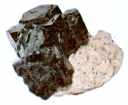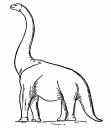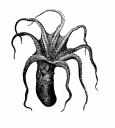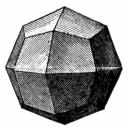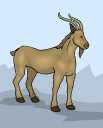S
SALT - a mineral
composed of sodium chloride (NaCl), a substance obtained from mines or
by the evaporation of sea water, used as a preservative, for flavoring,
or water softening
SAND - very fine loose
fragments of rock resulting from the wearing down of rocks by erosion
SAND GRAIN - one particle
of sand
SANDSTONE - a rock
made from cemented sand
SATURATED - a solution
that holds all the solute it can at regular temperatures
SCALES - thin coverings
that protect the skin of many fishes and reptiles
SCRATCH - to leave
a mark on an object
SCHIST - a metamorphic
rock with layered, flat minerals
SCORIA - a red volcanic
rock that is light and porous
SEDIMENTARY - rocks
formed by cemented particles or chemical reactions in or near water
SERPENTINITE - a green
rock that feels slippery, the state rock of California
SETTLE - to stay in
position
SHALE - sedimentary
rock that splits easily into layers
SHAPE - the geometric
appearance of an object
SHELL - the outside
of eggs, nuts, and animals such as crabs or snails
SHINY - bright or
glowing
SILICON - ( Si, #14)
an abundant grey element used in weatherproofing and computer chips
SILICON DIOXIDE -
chemical name of quartz, a mineral used to make glass
SILT - particles smaller
than sand
SILVER - (Ag, #47)
a metallic, white element used in jewelry and coins
SIZE - the measurement
or extent of something
SKELETON - the supporting
structure of an animal body consisting of bones
SMALL - not large
or big
SMOOTH - an even surface
that has no bumps
SODIUM - (Na, #11)
a soft, bright, silvery, metallic element that reacts vigorously with water
and combines with chlorine to form salt, Na is from the "natrium"
SOFT - not hard or
firm
SOFT PART - refers
to matter of an organism that cannot be readily preserved
SOIL - the loose layer
of earth where plants grow
SOLID - a state of
matter that is neither liquid or gas, substance with an internal crystalline
structure
SOLUTION - a homogeneous
mixture in which something is dissolved into a liquid
SOLUTE - the dissolved
substance in a solution, present in lesser amount
SOLVENT - a dissolving
medium (liquid), found in greatest amount
SPECIFIC GRAVITY -
the ratio of the weight of an object to that of an equal volume of water
STONE - a small piece
of rock
SQUARE - a geometric
figure with four equal sides and four right angles
STRATIGRAPHY - the
study of how rocks are layered
STREAK - mark left
when a mineral is scratched on a ceramic tile
SULFUR - (S, #16)
a pale-yellow, brittle, solid element found near volcanoes
SUPERSATURATED - a
solution that holds more solute than it normally can at normal temperatures;
heated to get more solute to dissolve |



